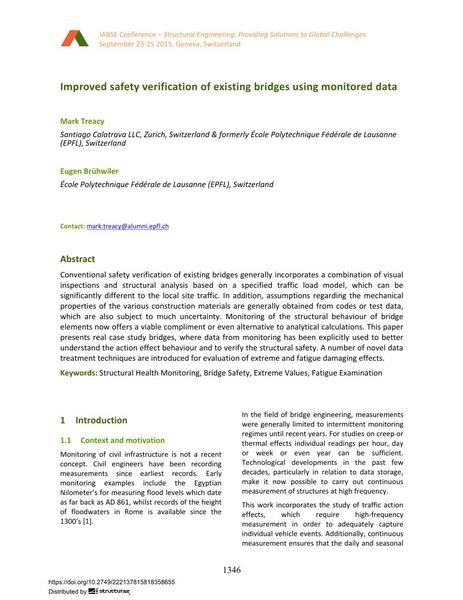Improved safety verification of existing bridges using monitored data

|
|
|||||||||||
Bibliographic Details
| Author(s): |
Mark Treacy
(Santiago Calatrava LLC, Zurich, Switzerland & formerly École Polytechnique Fédérale de Lausanne (EPFL), Switzerland)
Eugen Brühwiler |
||||
|---|---|---|---|---|---|
| Medium: | conference paper | ||||
| Language(s): | English | ||||
| Conference: | IABSE Conference: Structural Engineering: Providing Solutions to Global Challenges, Geneva, Switzerland, September 2015 | ||||
| Published in: | IABSE Conference Geneva 2015 | ||||
|
|||||
| Page(s): | 1346-1353 | ||||
| Total no. of pages: | 8 | ||||
| Year: | 2015 | ||||
| DOI: | 10.2749/222137815818358655 | ||||
| Abstract: |
Conventional safety verification of existing bridges generally incorporates a combination of visual inspections and structural analysis based on a specified traffic load model, which can be significantly different to the local site traffic. In addition, assumptions regarding the mechanical properties of the various construction materials are generally obtained from codes or test data, which are also subject to much uncertainty. Monitoring of the structural behaviour of bridge elements now offers a viable compliment or even alternative to analytical calculations. This paper presents real case study bridges, where data from monitoring has been explicitly used to better understand the action effect behaviour and to verify the structural safety. A number of novel data treatment techniques are introduced for evaluation of extreme and fatigue damaging effects. |
||||
| Keywords: |
structural health monitoring Extreme Values bridge safety Fatigue Examination
|
||||
